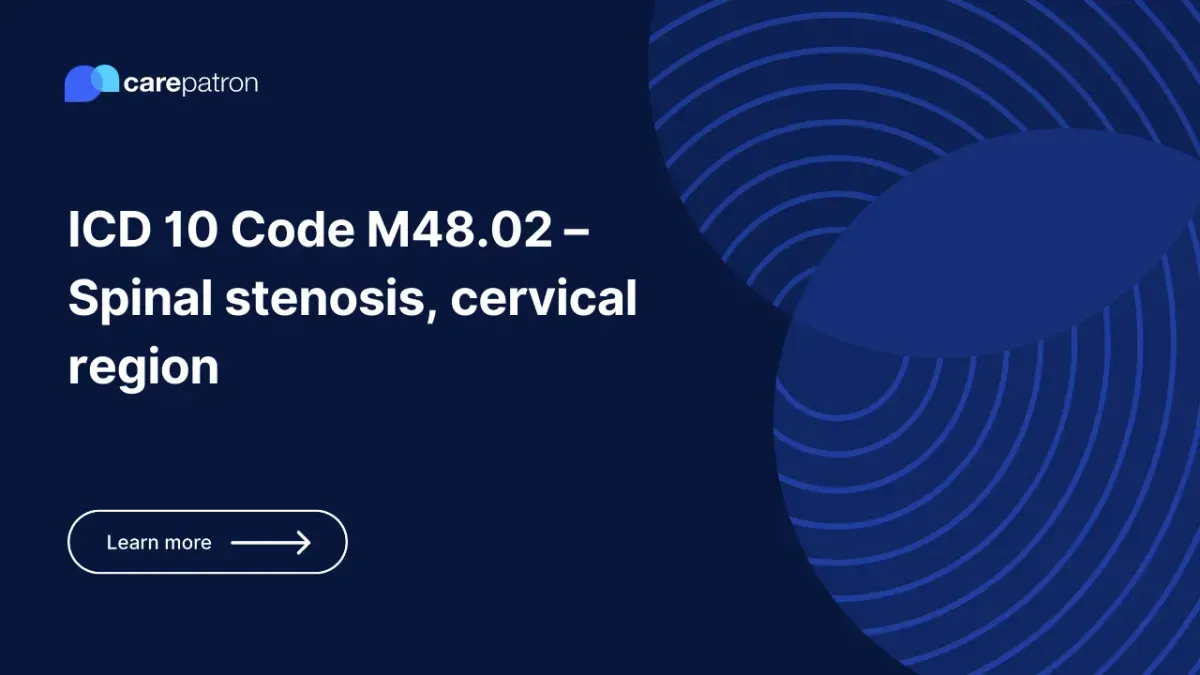
M48.02 – Spinal stenosis, cervical region
Learn about cervical spinal stenosis (M48.02), including its billability, diagnosis, treatments, and related codes.
Use Code
Commonly asked questions
The diagnosis code M48.02 from the ICD-10-CM is specifically used when documenting or billing for patients diagnosed with spinal stenosis of the cervical region. Clinicians should utilize M48.02 when medical examinations and diagnostic imaging confirm a spinal canal narrowing within the cervical spine, causing compression of the spinal cord and surrounding nerves.
Yes, the M48.02 spinal stenosis cervical region diagnosis is billable.
Common treatments for cervical region spinal stenosis include conservative measures such as medications for managing pain and inflammation, physical therapy aimed at strengthening the cervical spine and improving mobility, and epidural steroid injections to relieve inflammation around compressed nerves. In severe cases, surgical interventions may be required to widen the narrowed spinal canal and relieve pressure on the spinal cord and nerve roots.
EHR and practice management software
Get started for free
*No credit card required
Free
$0/usd
Unlimited clients
Telehealth
1GB of storage
Client portal text
Automated billing and online payments
